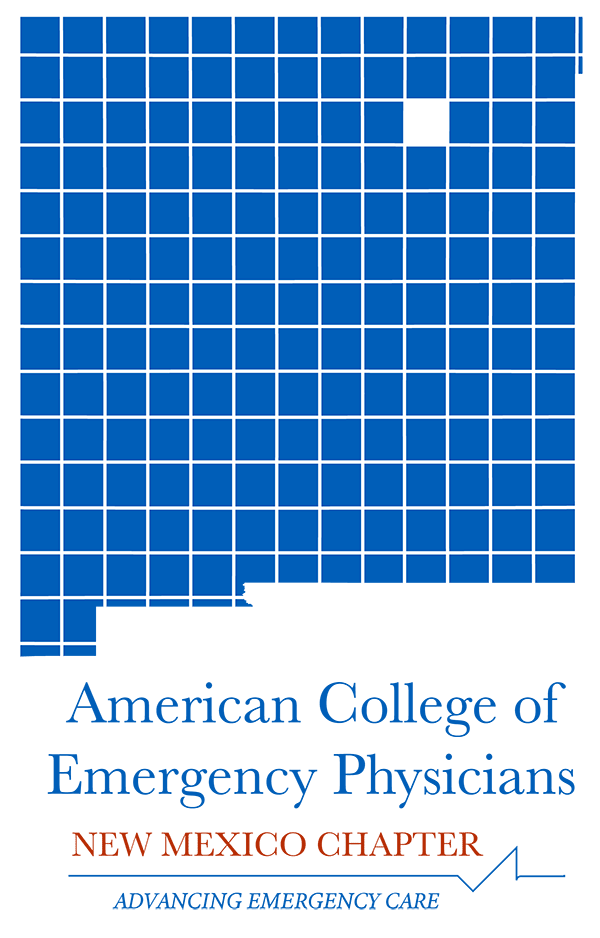Erik Anderson, MD
Resident, PGY II
University of New Mexico Department of Emergency Medicine
Standing in the Toothpaste Aisle
Last week I worked a particularly taxing shift that began with a crashing septic patient, followed by a cardiac arrest, and finished with two Stroke-Alerts that Neurology was justifiably not interested in. I gave a decent sign-out, put the final touches on a few notes, and began to leave the hospital. I didn’t make it very far before the “red-alert” sound of an emergent page came in requesting a pain regimen for an admitted patient,
pain meds pls.
I stopped in the doorway trying to recall the patient’s comorbidities and their last blood pressure. I recalled that they were a Family Medicine patient, gave a recommendation of what I would do, and asked her to reach out to the admitting team.
I biked out of the ambulance bay onto Campus Boulevard feeling immediately soothed by the mindless pleasure of putting motion to pedals. I felt the blood flowing back into my large muscle groups and seemingly out of my frontal cortex. Then my phone chimed with a text from my girlfriend.
Should I take the dogs to the park or are you taking them to river? Family will be here at 7.
Now stopped at the corner of Campus and Carlisle I stared into my phone, deliberating. The dog park doesn’t open until seven in the summer. Does May count as the Summer? The dogs won’t run if it’s hot. The river requires a drive across town. Is it rush hour? I could not come up with an answer to an uncomplicated and very low stakes question. Another text arrived from a GI Fellow,
I’m with the nurse for Bed 47, pt refused Fent. Please update pain meds.
I have since had a few days of vacation. My synapses have cooled off and I’ve been reflecting on how taxing making decisions can be and how many perceivably critical decisions we’re presenting with in a single shift. The feeling of getting those texts wasn’t physical exhaustion and it didn’t quite feel like pure mental exhaustion. As it turns out, there is a specific term for this in social science, “decision fatigue.”
According to The Psychology of Irrationality, decision fatigue is “the deteriorating quality of decisions made by an individual after a long session of decision making,” or as my mom put it, “it’s like standing in the toothpaste aisle.” It is the feeling of being presented with too many likely, but not certainly, equal choices. It is apparently why Steve Jobs, Barack Obama, and Mark Zuckerberg intentionally wear the same outfit every day. It may be why I love the page,
Bed 12’s abdominal pain is coming back. She’s due for another dose of fentanyl at 1600, okay to give now?
And why I feel depleted by the page,
pain meds pls.
A single eight-hour shift presents us with hundreds of what social scientists call “trade-offs.” Trade-offs are advanced and energy-consuming forms of decision-making where either of two choices have positive and negative elements. Nearly every request during a shift in the emergency room is a trade-off, and it exacts an energetic toll. e.g. “Are we giving tPA?”, “Is the patient decisional?”, “Do you want anything from the coffee cart?” All these choices require recollection, abstraction, prediction, and self-control.
As the number of decisions we make increases our ability to marshal these faculties decreases. According to my brief Google search, the most discussed sequela of decision fatigue is a lack of impulse control and impaired self-regulation. It is apparently intentional that rows of candy are placed immediately before grocery store cash registers. After choosing between eight kinds of peanut butter and fifty kinds of toothpaste, shoppers have a weakened ability to choose not to buy something that their rat brain desires. A social scientist at Stanford, Dean Spears, posits that this phenomenon contributes to the poor staying trapped in poverty: trade-offs require more energy when every choice has a greater relative cost, resulting in more impulsive financial decisions. In my case, it just led to decision avoidance, and I sent my girlfriend the text, “maybe the dogs don’t have to go out today.”
The studies suggest that we should develop questions as fully as possible, or even better, suggest a course of action rather than asking an open-ended question. We should give sign-outs that include small algorithms even if the next steps seem obvious, e.g., “if the MRI is negative, you can discharge. If it’s positive, re-consult Neurology.” We can take note when colleagues are at the end of their shift and give them an extra moment to respond. The cost of not doing so is that the exhausted party will likely select the default or status quo option, and we will bear the consequences of a suboptimal decision. Giving this particular shade of fatigue a name is not going to make it go away but recognizing it could decrease how much decision fatigue we inflict on our colleagues, at little cost to ourselves. In short, by keeping decision fatigue in mind we can help keep each other out of the toothpaste aisle.
